Table of Contents
- What is Anji Play?
- The Foundation: Understanding Anji Play China
- The Five Core Principles of Anji Play
- Essential Anji Play Materials and Equipment
- Implementing the Anji Play Approach in Your Kindergarten
- Benefits: Why Global Educators Choose Anji Play
- Conclusion: Starting Your True Play Journey
What is Anji Play?
Anji Play represents a revolutionary approach to early childhood education that originated in Anji County, Zhejiang Province, China. Developed over two decades by renowned educator Ms. Cheng Xueqin, this groundbreaking philosophy has transformed how we understand children’s learning through play.
Unlike traditional early education methods, the anji play approach centers on five interconnected principles that honor children’s innate capabilities. This methodology has gained international recognition, with implementation in over 130 public kindergartens serving 14,000 children in China, and expanding rapidly across the United States, Europe, and beyond.
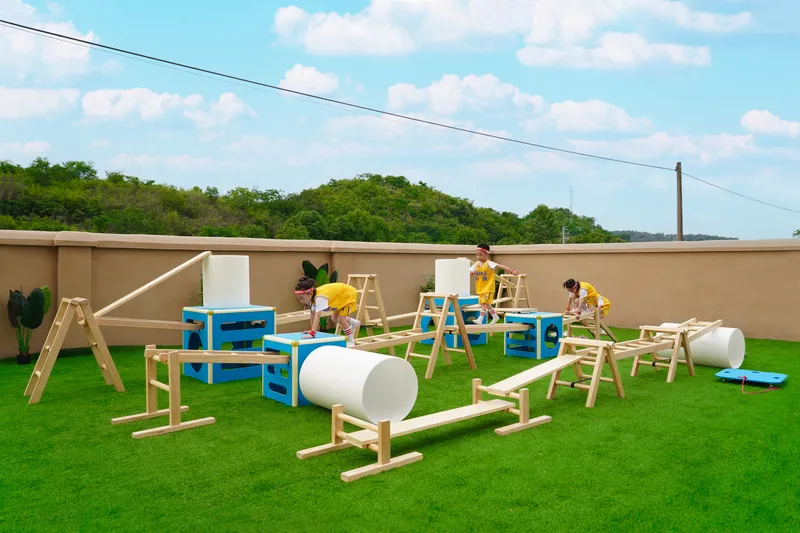
The World Economic Forum’s 2020 report “School of the Future” selected Anji Play as one of only 16 promising educational models worldwide, recognizing its profound impact on preparing children for tomorrow’s challenges.
The Foundation: Understanding Anji Play China’s Educational Revolution
Before diving into the five core anji play principles, it’s essential to understand the philosophy’s origins and the vision of its founder of anji play, Ms. Cheng Xueqin.
The History Behind Anji Play
In 1996, China’s Ministry of Education declared that “play should be the primary activity” in all early childhood programs. However, Ms. Cheng observed a critical gap: children weren’t experiencing genuine play—they were engaged in “false play” directed by adult agendas.
This realization sparked a transformation. Ms. Cheng asked educators and parents throughout Anji County to reflect on their most joyful childhood play memories. The responses revealed consistent themes:
- Extended, uninterrupted play periods
- Natural outdoor environments
- Large, open-ended materials from daily life
- Freedom from adult interference
- Elements of physical risk
- Self-determined goals and rules
These insights became the foundation for what we now recognize as Anji Play curriculum.
Recognition and Global Expansion
The anji play model has earned prestigious recognition:
- 2014: Ms. Cheng received China’s highest honor for early childhood education
- 2016: First U.S. implementation began in Madison, Wisconsin
- 2020: Named by World Economic Forum as a model education system
- 2021: China’s Ministry of Education promoted nationwide implementation
- Present: Operating in all 34 provinces of China and expanding internationally
The Five Core Principles of Anji Play
The essence of true play anji play philosophy rests on five interconnected principles. These aren’t abstract concepts—they’re actively implemented through specific practices, materials, and environments.

1. Love: The Foundation of True Play
Love in anji play principles extends far beyond simple affection. It represents a comprehensive ecosystem of trust, respect, and belief in children’s capabilities.
What Love Means in Practice:
Creating Safe Environments: Children must first feel emotionally and physically safe before they can engage in authentic exploration. This safety emerges from:
- Responsive, reliable, and consistent relationships
- Teachers who trust children’s decision-making abilities
- Environments free from constant correction or intervention
The “Hands Down, Mouths Closed” Philosophy: Educators in anji play kindergartens adopt an observational stance—hands down, mouths closed, but hearts, eyes, and ears wide open. This communicates profound respect for children’s autonomy.
Building Community Trust: Love creates a culture where:
- Teachers love children like their own
- Children develop positive relationships with peers
- Families trust the educational process
- The entire community values childhood
As Ms. Cheng states: “Only children who grow up with love dare to try, dare to fail, and can truly experience meaningful learning through play.”
2. Risk: Embracing Adventure in Learning
Perhaps the most challenging principle for Western educators, risk in anji play china doesn’t mean recklessness—it means trusting children to assess and manage challenges.
Why Risk Matters:
Learning inherently involves stepping into the unknown. When children push their physical, social, and intellectual limits, they develop:
- Problem-solving abilities: Navigating uncertainty builds critical thinking
- Self-assessment skills: Children learn to evaluate their own capabilities
- Resilience: Overcoming challenges builds confidence
- Physical competence: Managing real risks develops motor skills
Risk in Action:
In anji play materials environments, you’ll observe children:
- Constructing tall structures with wooden planks and ladders
- Climbing self-built combinations of equipment
- Testing balance on various heights
- Collaborating to solve structural problems
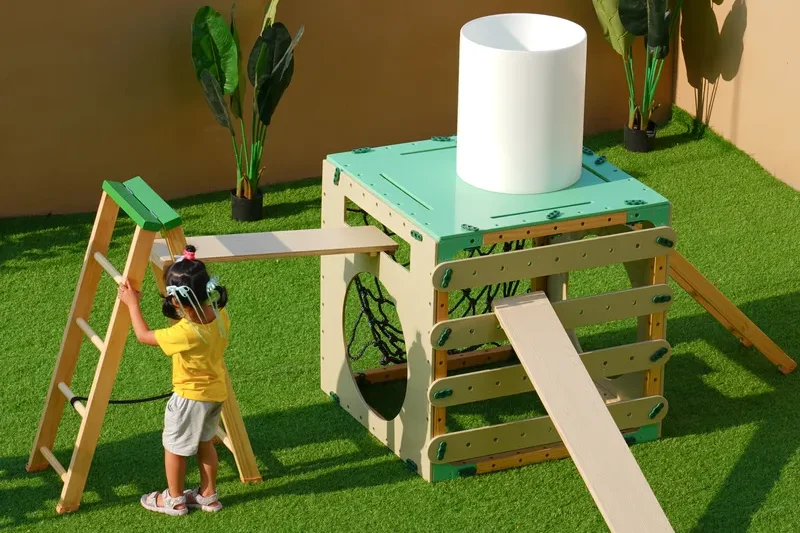
Teachers remain vigilant but don’t intervene unless there’s clear danger or children have exhausted all problem-solving options. This approach teaches children to:
- Assess risk levels independently
- Call for help when genuinely needed
- Develop trust in their own judgment
3. Joy: The Heart of Authentic Engagement
Joy is the natural outcome when children experience genuine autonomy in their play. It’s not manufactured happiness—it’s deep satisfaction from meaningful engagement.
Characteristics of Joy in Anji Play:
Self-Regulated Challenge: Children adjust difficulty levels to match their abilities, creating the perfect balance between boredom and frustration. This self-regulation produces:
- Sustained concentration
- Intrinsic motivation
- Genuine enthusiasm for learning
Multiple Expressions: Joy manifests differently:
- Quiet, focused concentration
- Exuberant laughter and movement
- Collaborative celebration
- Peaceful satisfaction
Assessment Tool: Anji play curriculum educators evaluate daily activities by asking: “Did children reach a state of joy?” No joy means the activity wasn’t true play.
As one five-year-old in Anji expressed: “If you don’t take me out to play every day, my heart will break into pieces, and the pieces will turn into mush.”
4. Engagement: Deep Investment in Discovery
True engagement emerges when children have maximum freedom to explore their world through anji play materials and environments.
Elements of Deep Engagement:
Extended Time Blocks: Children need minimum 2-hour uninterrupted play periods. Research from anji play video documentation shows that:
- First 30-45 minutes: Exploration and material selection
- Next 60 minutes: Complex construction and problem-solving
- Final period: Refinement and sustained play scenarios
Open-Ended Materials: The carefully curated anji play equipment includes:
- Wooden blocks in various sizes
- Ladders and planks
- Barrels and climbing cubes
- Carts and mats
- Natural elements (sand, water, mud)
- Art materials (paint, clay, brushes)
Physical and Mental Integration: Large-scale materials require children to:
- Use their entire body in problem-solving
- Collaborate with peers (materials are too large for solo use)
- Apply engineering and physics concepts
- Develop spatial reasoning
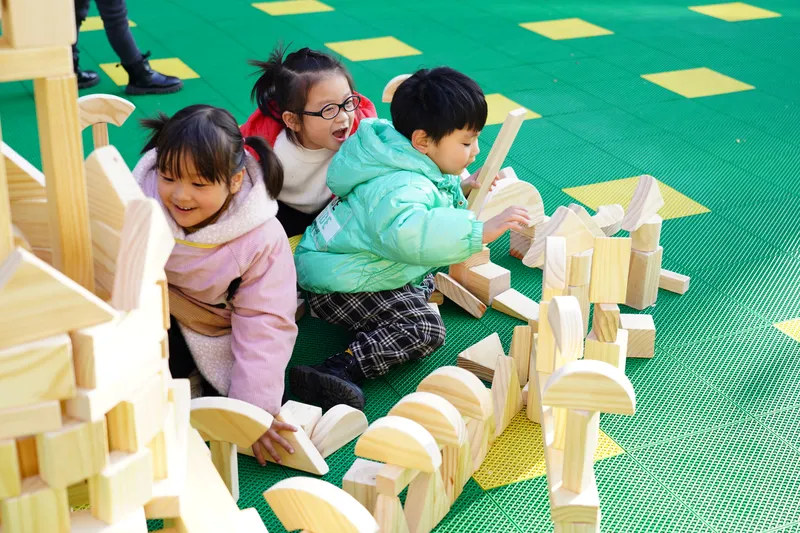
5. Reflection: Transforming Experience into Knowledge
Reflection is the bridge between doing and learning. The anji play approach integrates reflection throughout the day, making it a cornerstone of the learning process.
Three Levels of Reflection:
During Play: Children naturally pause to:
- Assess what’s working
- Adjust strategies
- Discuss plans with peers
Individual Documentation: After outdoor play, children:
- Draw their play experiences
- Describe their activities verbally
- Teachers transcribe children’s narratives
- Create “play stories” combining drawings and words
Play Sharing Sessions: This unique anji play principles practice involves:
- Teachers projecting photos and videos of the day’s play
- Children leading discussions about their experiences
- Peers asking questions and offering observations
- Teachers asking open-ended, non-leading questions
- Sessions lasting 30-40 minutes with full group engagement
Benefits of Reflection:
The reflection process:
- Develops metacognitive skills
- Builds communication abilities
- Deepens understanding of experiences
- Creates community knowledge
- Informs future play and learning
Essential Anji Play Materials and Equipment
Understanding the anji play materials philosophy is crucial for educators and institutions considering implementation.
Design Principles for Materials
The anji play equipment follows specific criteria that distinguish it from conventional playground equipment:
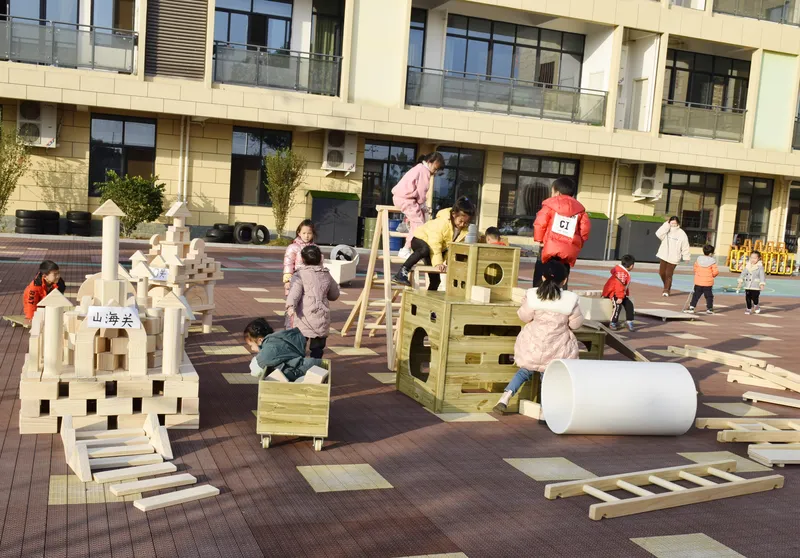
1. Minimal Structure, Maximum Possibility
Materials are intentionally simple, allowing children to:
- Imagine endless uses
- Combine items in novel ways
- Transform materials based on play narratives
- Develop creativity unbounded by predetermined functions
2. Scale and Size
Anji play china materials include oversized elements:
- Ladders taller than children
- Planks requiring two people to carry
- Large wooden blocks for major construction
- Equipment that engages the full body
This scale:
- Encourages collaboration
- Develops gross motor skills
- Presents authentic challenges
- Requires communication and planning
3. Natural and Durable Materials
Quality matters in anji play materials:
- Wood: Primary material for blocks, planks, ladders
- Metal: For structural components and connections
- Natural fibers: Ropes, mats
- Everyday objects: Barrels, tires, buckets
4. Locally Sourced and Culturally Relevant
Original anji play equipment utilized bamboo—abundant in Anji County. This principle encourages:
- Using locally available materials
- Incorporating cultural elements
- Reducing costs
- Building community connections
Core Material Categories
Construction Materials:
- Blocks: Various sizes from hand-sized to large cubes
- Planks: Different lengths and widths
- Ladders: Multiple heights with secure rungs
- Climbing cubes: Hollow wooden structures
- Connecting elements: Notches, grooves for stability
Transport and Storage:
- Carts: For moving heavy materials
- Barrels: Rolling, stacking, hiding
- Storage systems: Accessible to children
Soft Materials:
- Mats: For safety and creative play
- Cushions: Portable comfort elements
Natural Elements:
- Water play areas: Pumps, channels, containers
- Sand zones: Tools, molds, collaborative spaces
- Mud kitchens: Mixing, creating, experimenting
- Living elements: Gardens, plants, natural features
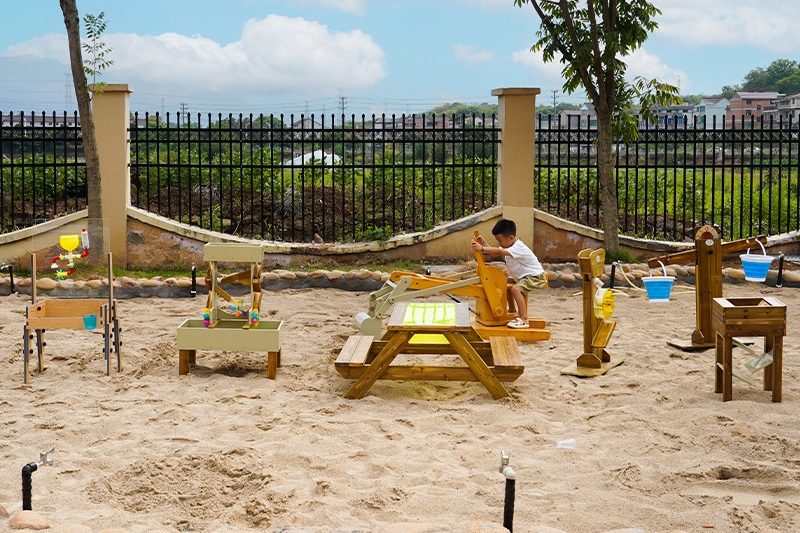
Implementing the Anji Play Approach in Your Kindergarten
For educational institutions and distributors considering anji play principles implementation, understanding the practical steps is essential.
Phase 1: Foundation Building (Months 1-3)
Professional Development:
- Teacher Training: Workshops on observation techniques
- Philosophy Study: Deep understanding of five principles
- Video Analysis: Reviewing anji play video examples from China
- Play Memory Work: Teachers reflect on their childhood play
Environmental Assessment:
- Evaluate existing outdoor spaces
- Identify indoor-outdoor connections
- Plan for natural element integration
- Design material storage solutions
Material Acquisition:
Partner with quality manufacturers (like specialized anji play materials suppliers) to obtain:
- Initial equipment sets
- Construction materials
- Natural element supplies
- Documentation tools (cameras, tablets)
Phase 2: Pilot Implementation (Months 4-6)
Gradual Introduction:
- Start with 1-2 classrooms
- Introduce materials progressively
- Observe children’s responses
- Document extensively
Practice Development:
- Teachers practice “hands down” observation
- Begin photo/video documentation
- Experiment with reflection sessions
- Build parent communication strategies
Phase 3: Expansion (Months 7-12)
Full School Implementation:
- Extend to all age groups
- Refine material selections
- Establish reflection routines
- Create school-wide practices
Community Engagement:
- Parent education sessions
- Community play events
- Teacher collaboration networks
- Continuous improvement cycles
Key Success Factors
Based on successful anji play curriculum implementations globally:
- Administrative Support: Leadership must embrace the philosophy
- Time Commitment: Minimum 2-hour daily play blocks
- Quality Materials: Investment in durable, appropriate equipment
- Teacher Development: Ongoing training and reflection opportunities
- Parent Partnership: Education and involvement programs
- Documentation Systems: Photo, video, and note-taking protocols
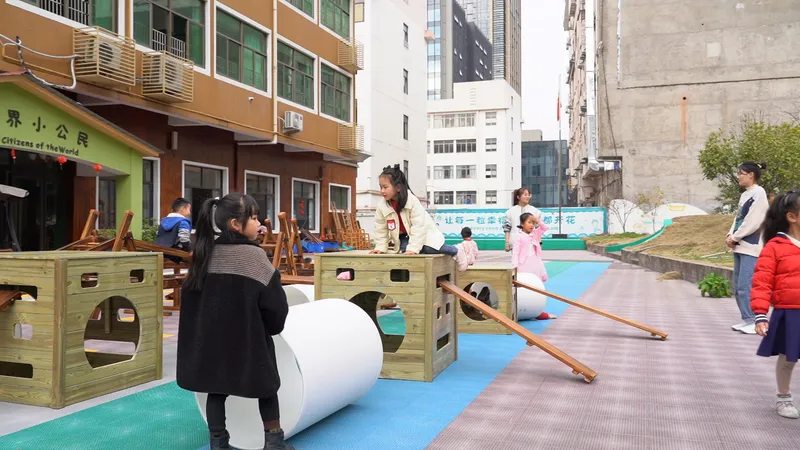
Benefits: Why Global Educators Choose Anji Play
Research and practical experience demonstrate compelling reasons for adopting anji play principles in your educational setting.
Developmental Benefits for Children
Cognitive Development:
- Problem-Solving Skills: Children face authentic challenges requiring creative solutions
- STEM Learning: Physics, engineering, and mathematics emerge naturally through play
- Executive Function: Planning, memory, and flexibility develop through complex play scenarios
- Metacognition: Reflection practices build self-awareness and learning strategies
Studies from anji play kindergartens in China show children entering primary school with:
- Superior engagement levels
- Concrete experiences supporting abstract concepts
- Advanced cooperation skills
- High creativity and curiosity
Social-Emotional Growth:
- Collaboration: Large materials necessitate teamwork
- Communication: Children negotiate, plan, and share ideas
- Empathy: Observing and supporting peers’ efforts
- Emotional Regulation: Managing frustration, celebrating success
- Confidence: Success in self-determined challenges builds self-efficacy
Physical Development:
- Gross Motor Skills: Climbing, balancing, lifting, carrying
- Fine Motor Control: Manipulating smaller materials and art supplies
- Body Awareness: Understanding physical capabilities and limits
- Health: Minimum 2 hours daily outdoor activity
Benefits for Educational Institutions
Educational Excellence:
- Recognition as innovative, child-centered program
- Alignment with international early learning standards
- Research-backed methodology
- Positive outcomes in child development assessments
Operational Advantages:
- Reduced need for traditional “toys” and pre-packaged curricula
- Materials that last years with proper care
- Flexible implementation adaptable to local contexts
- Natural marketing appeal to progressive families
Teacher Development:
- Professional growth through observation and reflection
- Reduced burnout from constant intervention
- Collaborative learning community
- Connection to global anji play network
Research Evidence
Recent peer-reviewed studies demonstrate:
- Cooperation Skills: Quasi-experimental research shows significant improvements in 5-6 year old children’s cooperative abilities through anji play approach implementation
- Risky Play Benefits: Development of age-appropriate risk assessment and physical competence
- Positive Emotions: Enhanced joy, engagement, and emotional well-being
- Inclusive Outcomes: Children with special needs show remarkable progress, particularly those on the autism spectrum
The 2020 World Economic Forum report validated anji play as preparing children for 21st-century competencies:
- Creativity and innovation
- Critical thinking
- Collaboration
- Communication
- Complex problem-solving
Choosing Quality Anji Play Materials for Your Institution
As a kindergarten or educational institution, selecting the right anji play equipment supplier is crucial for successful implementation.
What to Look for in Materials Suppliers
1. Understanding of Philosophy
Your supplier should demonstrate:
- Knowledge of anji play principles
- Experience with authentic anji play materials
- Ability to advise on age-appropriate selections
- Understanding of how materials support specific learning goals
2. Quality Standards
Essential quality markers include:
- Safety Certifications: Meet international standards (CE, ASTM, EN71)
- Durable Construction: Solid wood, secure joinery, stable design
- Smooth Finishes: No splinters, rounded edges, non-toxic treatments
- Weather Resistance: Suitable for year-round outdoor use
- Load Capacity: Appropriate for multiple children
3. Complete System Thinking
Beyond individual pieces, seek suppliers offering:
- Coordinated material sets
- Storage solutions
- Replacement part availability
- Implementation guidance
- Professional development resources
4. Customization Capabilities
Every kindergarten is unique. Quality suppliers provide:
- Adaptations for available space
- Cultural customization options
- Scaled solutions for different budgets
- Phased acquisition plans

Investment Considerations
Long-Term Value:
- Materials last 10-15 years with proper maintenance
- Minimal replacement needs
- No ongoing curriculum purchase requirements
- Reduced traditional toy/equipment expenses
Return on Investment:
- Enhanced enrollment from reputation
- Reduced teacher turnover
- Lower behavior management challenges
- Positive developmental outcomes
Getting Started: Your Anji Play Journey
The transformation to true play anji play methodology requires commitment, but the rewards—for children, educators, and communities—are profound.
Immediate Next Steps
- Educate Your Team:
- Share this guide with administrators and teachers
- Watch anji play video examples online
- Read the anji play pdf resources available from official sources
- Connect with existing anji play california or other regional implementations
- Assess Your Context:
- Evaluate current spaces and materials
- Identify potential pilot classrooms
- Calculate budget requirements
- Connect with Experts:
- Partner with experienced anji play materials suppliers
- Join international true play advocacy networks
- Visit existing anji play kindergartens if possible
- Start Small, Dream Big:
- Begin with one class or outdoor area
- Document your journey
- Celebrate small wins
- Learn and adjust continuously
The Vision of Anji Play
Ms. Cheng Xueqin’s vision extends beyond individual classrooms. The anji play ecology of early learning represents a fundamental reimagining of childhood education—one that:
- Honors children’s capabilities
- Trusts the learning process
- Embraces complexity and uncertainty
- Builds community and connection
- Prepares children for unknown futures
MIT Professor Mitchel Resnick captures it perfectly: “Anji Play is a global leader in preparing today’s children for life in tomorrow’s society.”
Join the Global Movement
Whether you’re an educational director, a kindergarten teacher, or a distributor of quality educational materials, you have the opportunity to be part of this revolutionary approach to early learning.
The key features of anji play aren’t complex theoretical constructs—they’re practical, observable, transformative realities. When implemented with fidelity to the core principles, anji play creates environments where:
- Every child discovers their capabilities
- Joy is the everyday experience
- Learning emerges from authentic experience
- Community thrives through shared values
- The future unfolds with possibility
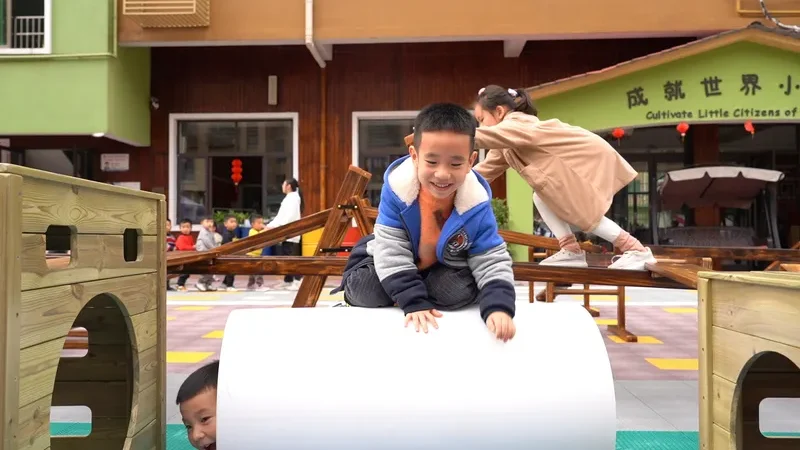
Your Partner in True Play
As a specialized manufacturer of wooden educational materials, we understand that anji play materials must meet the highest standards of quality, safety, and design integrity. Our commitment extends beyond product supply—we’re partners in your mission to transform early education.
When was anji play created? Starting in 2001, this approach has evolved through decades of careful observation, research, and refinement. Now, over 20 years later, its principles have been validated by research, recognized by international bodies, and most importantly, proven through the joy, growth, and capability of thousands of children worldwide.
Let’s embark on this journey together. The children are waiting, ready to show us what they’re capable of when given the freedom, materials, and trust they deserve.
About Our Company: As a leading Chinese manufacturer of wooden educational toys and anji play equipment, we specialize in producing high-quality, authentic materials that support the anji play principles. With deep understanding of the philosophy originating in china’s anji play model, we serve kindergartens, educational institutions, and distributors worldwide. Our products combine traditional craftsmanship with modern safety standards, ensuring your children have access to the finest anji play materials available.
Contact us today to discuss how we can support your institution’s journey toward implementing true play and transforming your early education program.